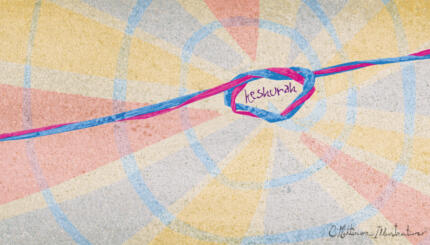“Why do the Muslims have such terrible things in their Quran?” people sometimes ask me. “I think that’s why they are so violent.”
It’s very easy to criticize other people’s sacred texts – and other traditions more generally. There seems to be much to criticize, especially for those with only a cursory knowledge of the community we feel entitled to demean.
Putting aside the broader question of bigotry, there is an interesting question about why we draw so many conclusions about each other’s religious traditions from small excerpts of text. It suggests that we are working backwards from a conclusion about the religion – and then confirming our preconceptions. Or, more benignly, that we are genuinely seeking to understand another tradition, but gravitate to the most troubling passages of the Quran or Bible or Torah (or another holy book) without the background needed to make sense of it.
Studying text without context can do real harm and provide a pretense for prejudice. It is like reading random excerpts from Macbeth and concluding that all professors of English literature should be looked on with suspicion as potential conspirators. It is like concluding from book 5 of the Harry Potter series that J.K. Rowling’s fans are hateful miscreants, who enjoy the idea of putting children’s lives at risk.
A helpful exercise in understanding why religious texts cannot be understood in absence of careful study comes from examining problematic passages in one’s own tradition. As far as I am aware, they are present in nearly every religious and ethical tradition.
One of the most brutal passages in the Torah falls in this week’s Torah portion, Matot-Masei. This is an excerpt of Numbers 31:1-10, adapted from the translation in The Torah: A Women’s Commentary:
God spoke to Moses, saying, “Avenge the Israelite people on the Midianites; then you shall be gathered to your kin.” Moses spoke to the people, saying, “Let troops be picked out from among you for a campaign, and let them fall upon Midian to wreak God’s vengeance on Midian. You shall dispatch on the campaign a thousand from every one of the tribes of Israel.
So a thousand from each tribe were furnished from the divisions of Israel, twelve thousand picked for the campaign. Moses dispatched them on the campaign, a thousand from each tribe, with Phinehas son of Eleazar serving as a priest on the campaign, equipped with the sacred utensils and trumpets for sounding the blasts. They took the field against Midian, as God had commanded Moses, and slew every male….
The Israelites took the women and other dependents of the Midianites captive and seized as booty all their beasts, all their herds, and all their wealth. And they destroyed by fire all the towns in which they settled, and their encampments….
To the uninformed reader, this passage from the Torah not only recounts, but provides future justification for, ethnic cleansing, pillaging, sexual slavery, and even genocide. Indeed, if read literally and without background, such would not be an unfounded conclusion.
Yet the Torah is seldom read without careful analysis and commentary. Doing so goes against millennia of scholarship, which focuses on the meticulous analysis of words and phrases and ideas. Those scholarly reflections have become so central to our tradition as to be seen as part of the body of Torah itself. And when we read that violent passage with commentary, we come to entirely different conclusions about what it means.
Here is just one example of what commentary and context can do, based on a single sentence.
The famous medieval scholar Rashi turns the passage on its head, by digging deeply into the second verse (Numbers 31:2). He asks why the Israelites would wage war against the Midianites while trying to avoid a battle with other groups. Rashi suggests that the Midianites posed a direct threat to the Israelites, having caused internal strife among them, while the other groups did nothing – and, therefore, that the other groups must not be attacked.
Even more remarkably, Rashi suggests that “two godly doves,” Ruth and Naomi, come forth from among the Ammonites and Moabites – not the Israelites. If the Israelites defeated those groups in battles, such heroines might not have survived.
This has profound implications. In Jewish tradition, Ruth and her mother-in-law Naomi are archetypes of righteousness. So much so that King David is in Ruth’s family line – and by extension so is the messiah. Without Ruth and the Moabites, the world could not be redeemed.
Even for those of us who understand the idea of a messiah metaphorically, the interpretation retains its significance. The past, recounted in the Torah’s literal text, is one of religious violence. But the future is one of hope, made possible by other ethnic and cultural groups. Without them, the possibility of future peace and redemption quite literally could not exist.
Further, Ruth and Naomi are powerful female figures who change the world. In the Torah’s literal text, women from other groups are treated brutally and objectified. But as Rashi explains, the future depends on the empowerment of women from other communities, for they are essential to humanity’s redemption.
In the careful and meticulous interpretation of a single sentence, Rashi transforms the meaning of this violent passage from the Book of Numbers. With myriad other commentators and many more sentences from the passage to parse, the literal words of the Torah are alone hardly representative of our tradition, our values, or our process of understanding sacred texts.
If anything, it is the fearless and thoughtful process of study and discernment that is most representative of our tradition. It would behoove us as Jews to give similar latitude to other religious communities, as they interpret and derive more hopeful meanings from even the more violent passages of their sacred texts.



